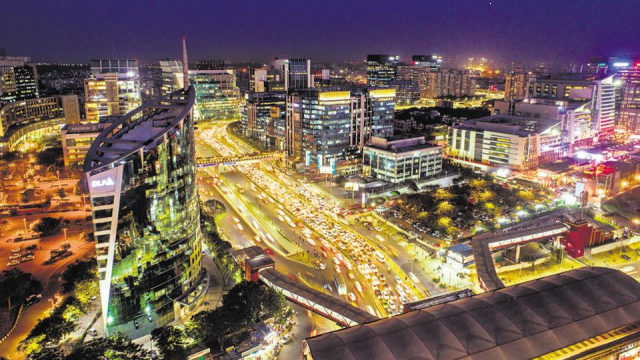Gurugram Unveils Infrastructure Development Roadmap for Projected Population Surge
The Gurugram Metropolitan Development Authority (GMDA) has introduced a comprehensive infrastructure development roadmap to guide future projects and budgets in anticipation of a projected population increase. Gurugram, known as the “Millennial City,” is a preferred destination for corporations, IT giants, startups, and businesses due to its connectivity with Delhi and Noida. The strategic plan focuses on education, healthcare, public safety, recreation, and socio-cultural facilities. It addresses the need for additional schools, colleges, medical facilities, police posts, fire stations, sports infrastructure, and socio-cultural amenities to accommodate a growing population.
Key Points:
Population Surge Projection: Gurugram anticipates a population surge that could reach 55 lakh (5.5 million) residents by 2041. To prepare for this growth, the GMDA has devised a strategic plan aimed at ensuring essential infrastructure and services are in place.
Education Infrastructure: The plan identifies the need for additional educational institutions, including 750 nursery schools, 430 primary schools, and 686 secondary and senior secondary schools. It also recommends establishing three more medical colleges, four engineering colleges, five non-professional colleges, and a veterinary institute.
Healthcare Facilities: Gurugram plans to build two general hospitals, a civil hospital, six veterinary hospitals, 210 specialty hospitals, diagnostic centers, 250 dispensaries and clinics, 25 nursing homes, and maternity centers by 2041. The goal is to ensure government-run healthcare facilities are accessible within a 3-kilometer radius for residents.
Public Safety: The plan calls for additional police posts, particularly in Old Gurugram and new sectors with housing societies. It also suggests establishing six more fire stations and a women’s safety cell to enhance public safety.
Recreation Infrastructure: While Gurugram already has a significant number of parks, the plan recommends dedicating space for sports complexes and a stadium, opening up school sports infrastructure to the community, and ensuring parks and playgrounds are available within colonies.
Socio-Cultural Facilities: Gurugram plans to develop socio-cultural amenities, including cultural centers, old-age homes, orphanages, night shelters, hostels for working individuals, and cremation and burial grounds. It also recognizes the need for places of worship for various communities in newer sectors.
How does the strategic plan address the disparities in educational and healthcare facilities between older and newer sectors of Gurugram, as well as neighboring areas like Manesar?
The plan acknowledges the disparities in educational and healthcare facilities and calls for audits of space occupied by larger institutions for multiple purposes. It aims to bridge the gap by recommending the establishment of additional schools, colleges, medical facilities, and healthcare centers in both older and newer sectors, including Manesar.
What measures are proposed to enhance early childhood education and childcare services in Gurugram?
The plan suggests the incorporation of playschools, day-care centers, and creches within housing societies or near offices to improve accessibility to early childhood education and childcare services. This aims to support working parents and promote early childhood development.
How does the plan address public safety and emergency response in Gurugram, considering the city’s projected population growth?
The plan identifies the need for additional police posts and fire stations, particularly in areas with housing societies. It emphasizes the importance of ensuring that government-run healthcare facilities are accessible within a 3-kilometer radius for all residents to enhance public safety and emergency response capabilities.
In what ways does the plan promote community engagement and access to sports infrastructure in Gurugram?
The plan recommends opening up sports infrastructure in government schools to local communities after school hours, ensuring that parks and playgrounds are available every 500 meters within colonies. This promotes community engagement and access to sports facilities, contributing to residents’ well-being.
Why is the establishment of socio-cultural facilities considered important in Gurugram’s development plan?
The plan recognizes the significance of socio-cultural facilities in providing essential services and support to residents. Cultural centers promote cultural exchange and activities, while old-age homes, orphanages, and shelters address specific needs within the community. These facilities contribute to the overall well-being and social fabric of Gurugram.
Month: Current Affairs - September, 2023
Category: India Nation & States Current Affairs







